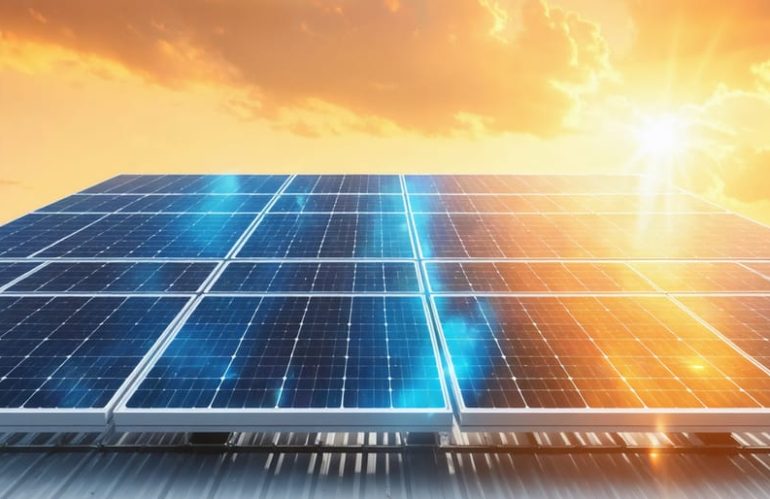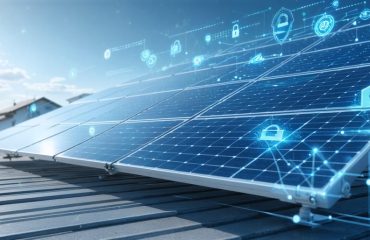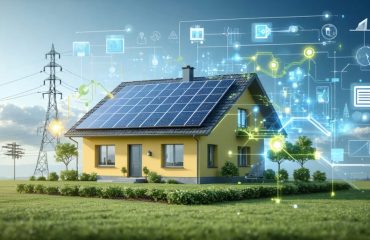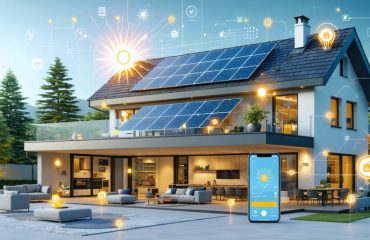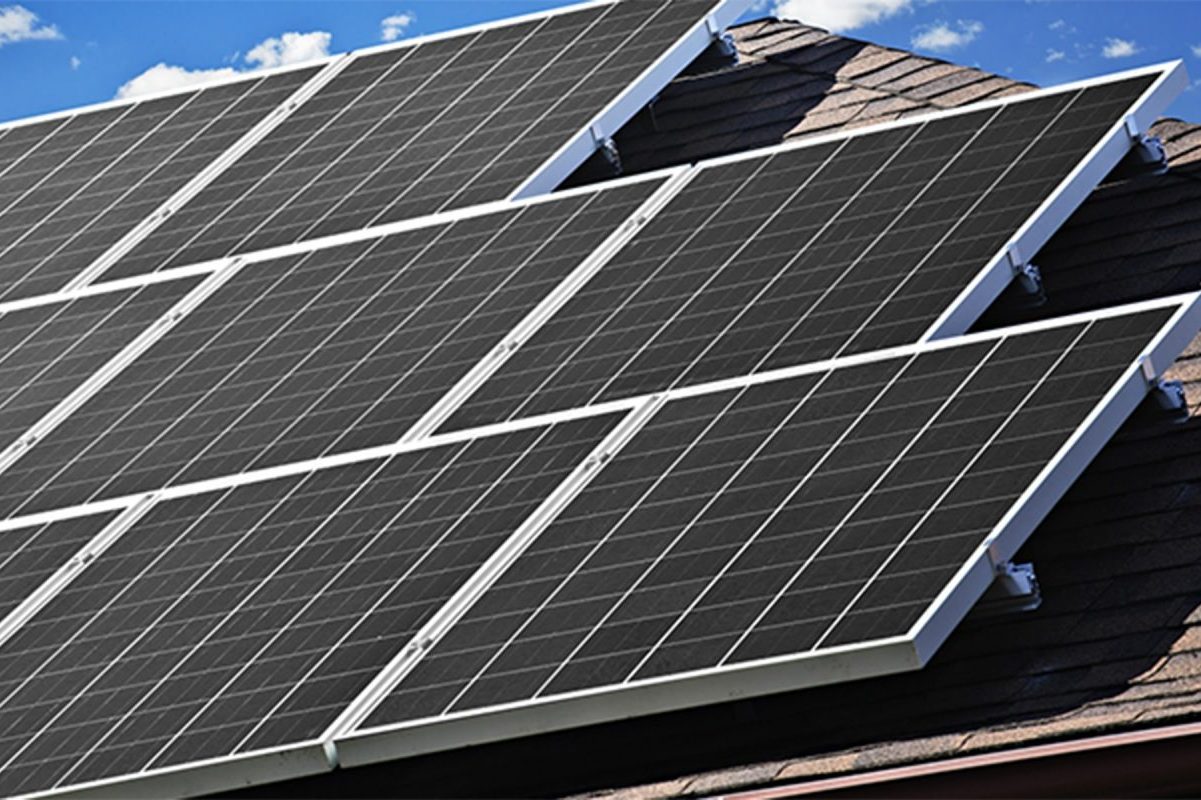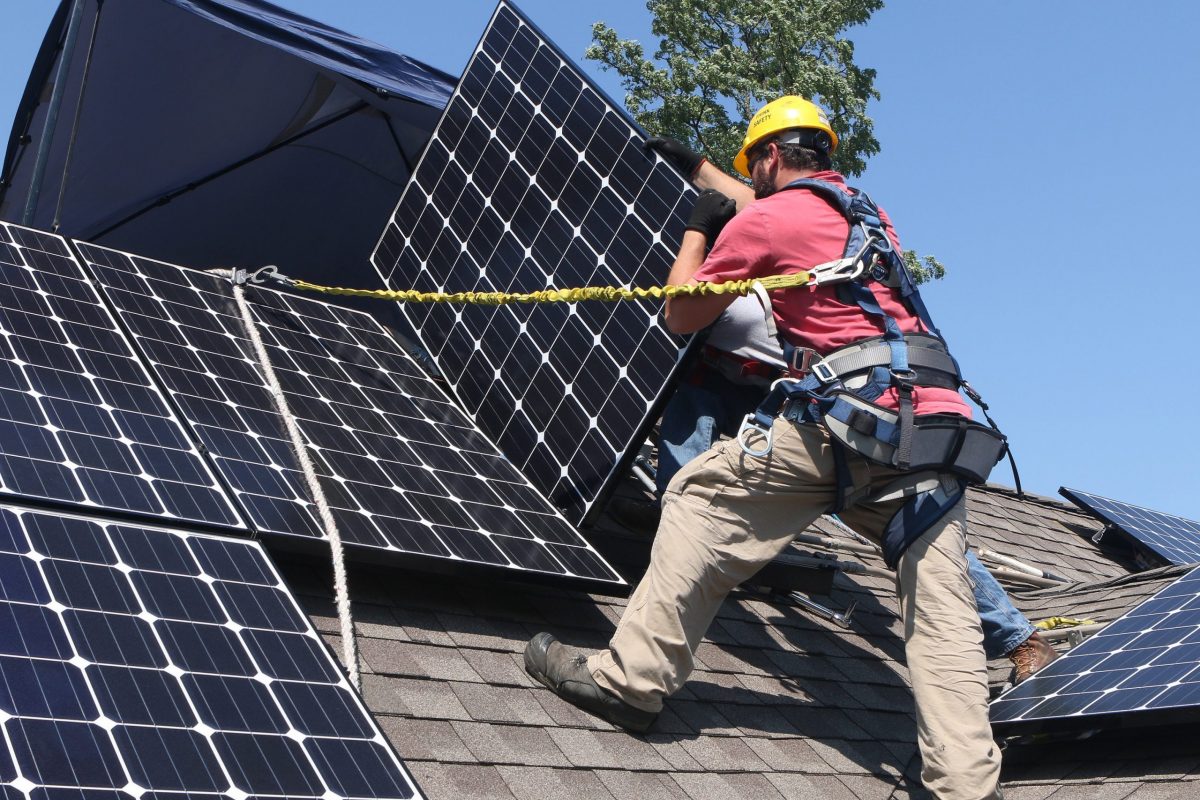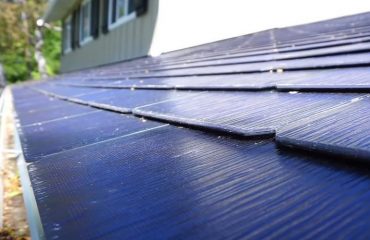Temperature significantly impacts the performance of residential solar power systems, with most panels losing 0.3-0.5% efficiency for every degree Celsius above their rated temperature. This efficiency drop directly affects your energy production and financial returns, making temperature management crucial for optimal solar performance. While conventional wisdom suggests solar panels perform best in intense sunlight, excessive heat actually reduces their ability to generate electricity. Understanding this relationship between temperature and panel efficiency empowers homeowners to make smarter decisions about panel placement, cooling solutions, and seasonal maintenance. Modern solar technology offers innovative solutions to combat heat-related efficiency losses, from advanced panel materials to strategic installation techniques that maximize airflow and minimize heat buildup.
How Temperature Affects Your Solar Panel’s Performance
The Temperature Coefficient: What Every Homeowner Should Know
When shopping for solar panels, you’ll often come across a specification called the temperature coefficient. Think of it as your panel’s sensitivity to heat. Typically expressed as a percentage (like -0.35% per °C), this number tells you how much your panel’s power output decreases for each degree rise in temperature above 25°C (77°F).
For example, if your panel has a temperature coefficient of -0.35% and the temperature rises to 35°C (95°F), your panel will produce about 3.5% less power than its rated capacity. While this might sound concerning, it’s a normal characteristic of all solar panels.
What does this mean for you as a homeowner? When comparing solar panels, look for lower temperature coefficient numbers (closer to zero). A panel with -0.3% will perform better in hot weather than one with -0.4%. Premium panels often have better temperature coefficients, which can make a noticeable difference in warm climates.
Remember, while temperature affects performance, modern solar panels are designed to work efficiently in most weather conditions, and the overall annual energy production usually meets expectations.
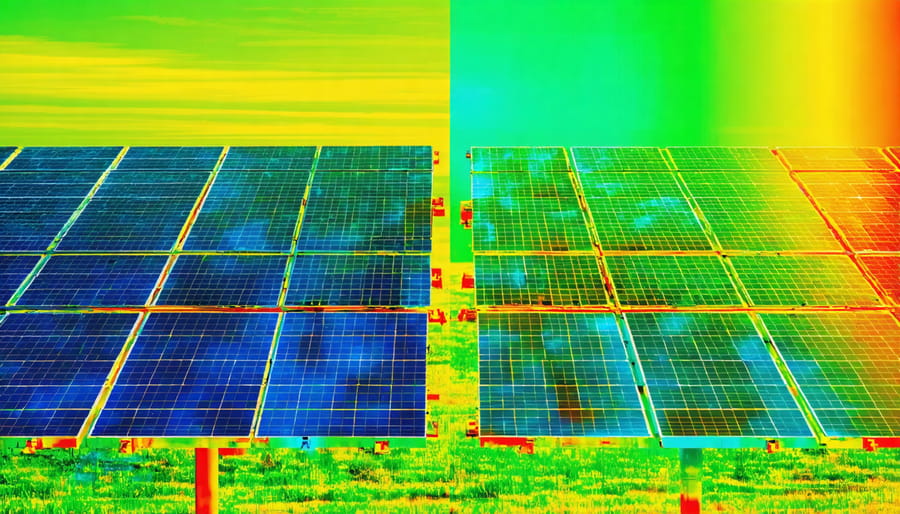
Hot vs. Cold: When Do Panels Work Best?
Let’s look at how solar panels perform in different real-world conditions. In desert locations like Arizona, panels routinely face temperatures above 100°F (38°C), which actually reduces their efficiency by about 10-25%. However, these locations still produce excellent overall output thanks to abundant sunshine and clear skies.
By contrast, cold-climate regions like Colorado or Minnesota often see better efficiency from their panels during winter, despite shorter days. On bright, cold winter days, panels can operate at peak efficiency, sometimes exceeding their rated capacity. For example, a homeowner in Minneapolis reported their system performing at 115% efficiency on a sunny 30°F (-1°C) day.
The sweet spot for solar panel performance typically falls between 59-95°F (15-35°C). Cities like San Diego, with moderate year-round temperatures, often see the most consistent panel performance. However, even in extreme climates, modern solar panels are designed to handle temperature variations while still producing significant power throughout the year.
Remember, while temperature affects efficiency, the amount of available sunlight remains the most crucial factor in overall energy production.
Smart Solutions to Keep Your Panels Cool
Proper Installation Techniques
Proper installation of your solar panels plays a crucial role in maintaining optimal temperature and efficiency. The key is creating adequate airflow around your panels, which helps prevent heat buildup and maintains better performance during warm weather.
When mounting panels on your roof, maintaining a gap of 3-6 inches between the panels and your roof surface is essential. This space creates a natural cooling channel that allows air to flow freely underneath the panels. Think of it as giving your panels room to “breathe.”
The mounting angle also matters. In addition to considering your location’s optimal angle for sunlight capture, a slight tilt helps promote natural air circulation. Most residential installations benefit from a 15-40 degree tilt, which not only maximizes sun exposure but also helps heat naturally dissipate.
Spacing between individual panels is equally important. A gap of about 1 inch between panels allows for thermal expansion and creates additional cooling pathways. This spacing also makes maintenance easier and prevents potential damage from heat stress.
For ground-mounted systems, consider raising the panels higher off the ground to maximize airflow. A minimum height of 3 feet is recommended, but taller mounting can provide even better ventilation, especially in areas with tall grass or snow accumulation.
Remember to keep the area around your panels clear of debris and vegetation that might restrict airflow. Regular maintenance ensures these ventilation channels remain effective year-round.
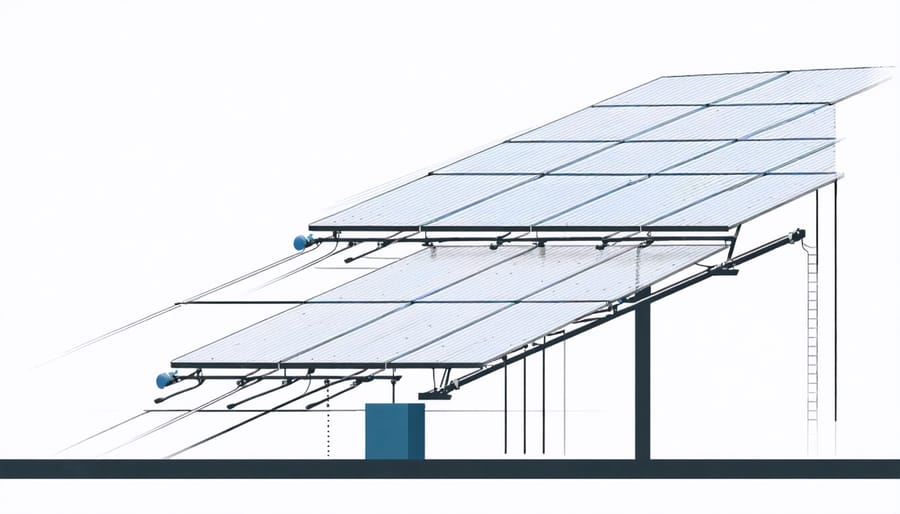
Simple Maintenance Tips for Better Cooling
Keeping your solar panels running at peak efficiency doesn’t require complex maintenance. Here are some simple steps you can take to help manage temperature and maintain optimal performance.
Regular cleaning is your first line of defense. Dust, leaves, and debris can trap heat and reduce airflow around your panels. A gentle spray with a garden hose in the early morning or evening (when panels are cool) is usually sufficient. For stubborn dirt, use soft brushes and mild soap specifically designed for solar panels.
Creating proper airflow is crucial. Trim any overhanging branches or vegetation that might block air circulation around your panels. Ensure there’s adequate space between your roof and panels – most installers recommend a gap of 3-4 inches for optimal ventilation.
Monitor your panels’ performance through your inverter display or monitoring app. Sudden drops in efficiency might indicate temperature-related issues that need attention. Setting up automated alerts can help you catch problems early.
Consider installing simple additions like solar panel skirts or deflectors that can improve airflow while preventing birds from nesting under your panels. These affordable additions can make a significant difference in maintaining cooler operating temperatures.
Schedule professional inspections annually to ensure mounting hardware is secure and ventilation paths remain unobstructed. This preventive maintenance helps avoid temperature-related efficiency losses and extends your system’s lifespan.
Maximizing Efficiency Through Integration
Combining Cooling Solutions with Other Efficiency Measures
To maximize the benefits of solar panel cooling solutions, consider implementing them alongside other energy efficiency measures. A well-planned approach combines multiple strategies that work together to enhance overall system performance.
Start with proper roof and attic insulation, which helps maintain consistent temperatures throughout your home and reduces the heat transfer to your solar panels. Good insulation acts as a barrier, preventing excess heat from building up beneath your panels during hot weather.
Strategic ventilation plays a crucial role too. Installing ridge vents or solar-powered attic fans can help expel hot air from your roof space, creating better airflow around your panels. This natural ventilation system works in harmony with active cooling methods to maintain optimal operating temperatures.
Consider adding shade trees strategically around your property, being careful not to block your panels. These trees can help reduce ambient temperature while providing natural cooling through evapotranspiration. Just ensure they’re planted far enough away to avoid casting shadows on your panels.
For maximum efficiency, integrate these cooling solutions with smart monitoring systems. These systems can help you track panel temperature and performance, allowing you to adjust your cooling strategy as needed. Remember, the most effective approach often combines multiple solutions working together rather than relying on a single method.
Smart Monitoring for Better Performance
Today’s smart monitoring systems make it easier than ever to keep your solar panels operating at peak efficiency. These systems use advanced sensors to track panel temperature, weather conditions, and performance metrics in real-time, allowing you to spot and address efficiency issues before they impact your energy production.
Modern solar monitoring and efficiency tracking tools can automatically adjust panel settings and cleaning schedules based on temperature data. Many systems now come with user-friendly mobile apps that send alerts when panels are operating outside optimal temperature ranges, helping you take prompt action to maintain efficiency.
These monitoring solutions can also predict when panels might need maintenance or cleaning to prevent temperature-related performance drops. By analyzing patterns in temperature fluctuations and energy output, the system can recommend the best times for maintenance activities and even suggest adjustments to panel positioning for optimal performance throughout different seasons.
With smart monitoring, you’re always in control of your solar investment, ensuring your panels deliver maximum energy savings regardless of temperature challenges.
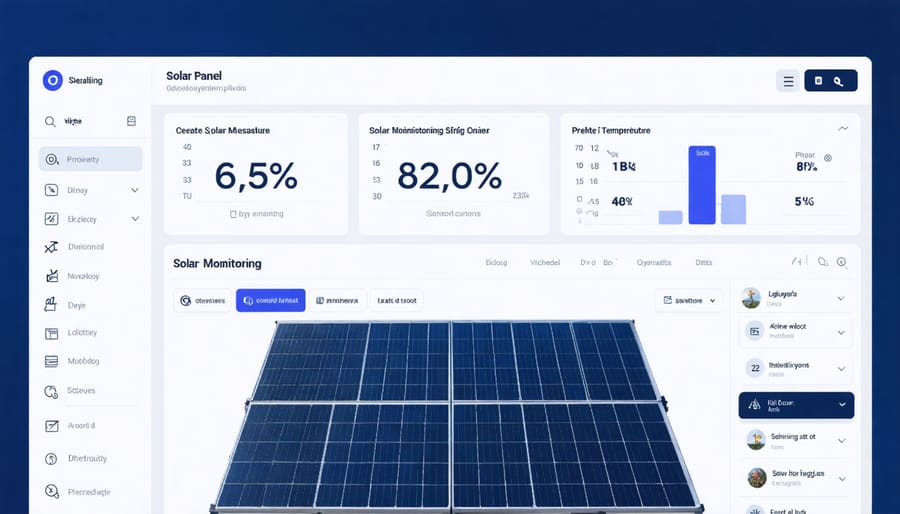
Understanding and managing temperature effects on your solar panels is crucial for maximizing your renewable energy investment. As we’ve explored, solar panels perform best in cooler conditions, typically between 59-95°F (15-35°C), with efficiency declining as temperatures rise. The good news is that there are several practical steps you can take to maintain optimal panel performance.
By ensuring proper installation with adequate airflow, regular maintenance, and considering cooling solutions like light-colored mounting materials or innovative cooling systems, you can help your panels operate at peak efficiency. Remember that even with some efficiency loss on hot days, modern solar panels are designed to provide reliable power throughout the year.
Taking action now to implement these temperature management strategies can lead to better system performance and increased energy savings. Consider working with a qualified solar installer to assess your specific situation and determine the best approach for your home. With proper temperature management, your solar investment can continue to deliver clean, renewable energy while helping reduce your carbon footprint and energy bills for years to come.

